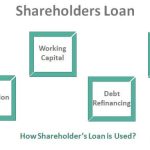Yes, there are differences. Not all loans are equal. Traditional housing loans are basically housing loans without the support of the United States federal government. For the first batch of home buyers, residential secured loans are usually attributed to traditional residential loans or FHA loans. Both have advantages and disadvantages. In this paper, we will study the two and refine them into the most basic form to help the decision-making process.
Traditional housing loans
As mentioned earlier, traditional housing loans are not supported by the federal government. There are two types: Loans that follow the GSE guidelines are called eligible loans. Government sponsored entities are residential interests and real estate interests. If the loan does not meet the GSE terms of the GSE, it will be considered as a “loan”.
The 30-year fixed rate traditional guaranteed loan has existed for many years and is considered as the industry standard. There are also mortgage loans with adjustable interest rates, huge residential loans and other common loans. Traditional mortgage loans can be used to finance residential mortgage loans or refinance residential buildings. Banks and borrowers prefer to follow the traditional route. Because it is less risky for them.
Traditional loans provide greater freedom for borrowers by changing repayment conditions, interest rates and loan amounts. Although more funds are needed, traditional loans are the best if you want to avoid personal mortgage insurance. Another disadvantage is that loans are mainly based on credit scores. Borrowers with questionable credit will find it more difficult to accept financing.
FHA loan
The federal government supports FHA loans. FHA financing is applicable to low-income and first-time buyers, otherwise they may not be able to afford a house. The first batch of buyers can usually purchase a house with a down payment of less than 3.5%. This interest rate is only applicable to individuals with credit scores above 580, but it can significantly reduce the time saving of advance payment.
These three advantages include: 1) Low prepayment 2) Low transaction cost 3) It is easy to obtain qualification when the credit is bad or damaged. Some disadvantages include: 1) Not applicable to certain types of attributes. 2) The advance payment is at the borrower’s discretion. (Personal advances with lower credit scores are higher.) 3. There are fewer financing options. 4.) Guarantee insurance is required.










